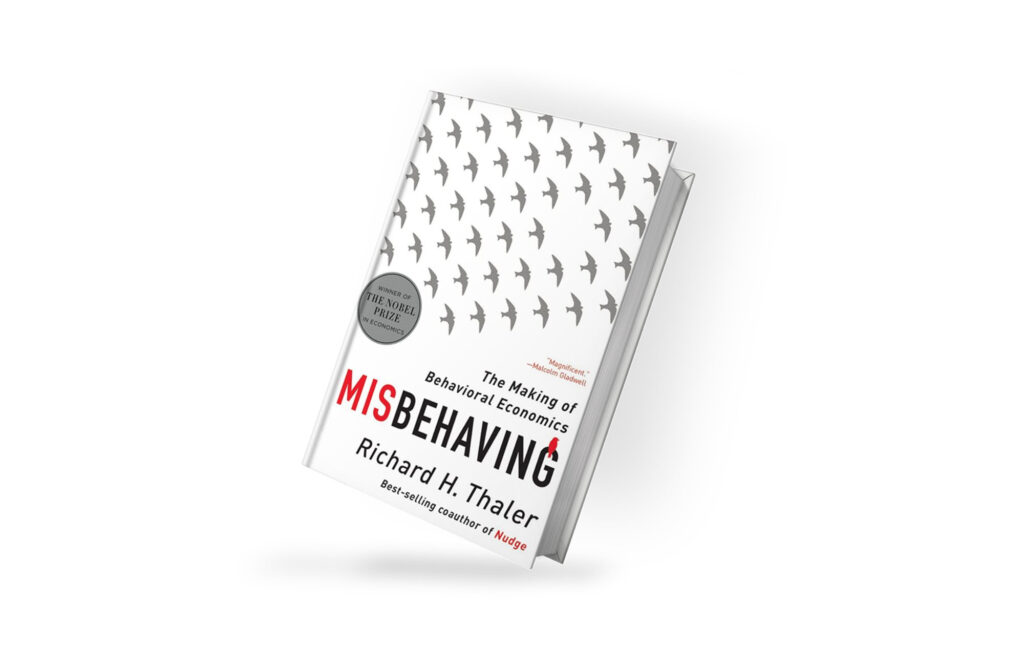
In this week’s newsletter, we talk about Jio’s foray into mutual funds, Canada’s economic woes and a lot more.
If you’d like to receive our 3-min daily newsletter that breaks down the world of business & finance in plain English – click here. Or, download the Finshots app here.
Is Aladdin Jio’s secret weapon to disrupt mutual funds?
Mukesh Ambani’s foray into mutual funds business is now official. A few months ago Reliance Jio announced a partnership with global asset management company BlackRock. And last week, the duo finally asked SEBI for permission to disrupt the industry.
Okay. We say disrupt because that’s what everyone believes is going to happen. Ever since Reliance set the cat amongst the pigeons in the telecom industry, the base expectation is that every industry Reliance wades into will see a mammoth change. And right now, Jio has the might of the Reliance distribution network — 450 million telecom users and the physical presence of over 18,000 stores in the Reliance Retail umbrella.
So will it happen this time?
Well, we don’t know. But it’s not going to be easy.
For starters, there are around 45 rivals already. The ones who’ve been around for a while have their ‘star’ fund managers who do their in-depth research before deciding which stocks to buy and sell. They’re the ones who already have a long track record to boast of. People will look at the past performance and make their choices. So if Jio wants to avoid that trap, it’ll have to pull a rabbit out of the hat and snag someone who’s already a stalwart in the industry — back in September, there were rumours that Nilesh Shah, the MD of Kotak Mutual Fund, was jumping ship to Jio. And that got people excited. Eventually, he had to quash the rumour, but that’s the kind of person Jio might need at the top. Otherwise, it’ll take some work to convince people about Jio’s potential.
Secondly, playing a price game is hard. If Jio could offer ultra-cheap bundles to lure telecom subscribers, that wouldn’t work out the same way in the mutual fund world. There are plenty of low-cost funds already swarming the market and Jio will be just another one in the pack. Also, they can’t offer freebies or run big promotions either to entice investors because the market regulator SEBI frowns upon all that. Or as journalist Debashis Basu put it, “no one can throw money and buy loyalty.”
So yeah, disruption seems to be a far dream at the moment.
But wait… maybe, just maybe, Reliance could have something up its sleeve — the partnership with BlackRock could give it access to the world’s most sophisticated portfolio management tool. We’re talking about Aladdin, a neat acronym for ‘Asset, Liability, Debt and Derivative Investment Network’.
See, back in the late 1980s, Larry Fink was a young 30-something Wall Street banker who was tasting sweet success. He was the toast of the industry and made millions of dollars for the investment bank he worked at. But soon, some of his trades went sour. With his magic dimming, the bank shunted him to less glamorous positions. But Fink blamed the fiasco on the lack of a proper risk and portfolio tool.
So he decided to set up his own venture along with a few other partners. In 1988, BlackRock was born in a tiny one room apartment in New York. And the focus was simple — use tech to be the best portfolio manager ever.
And initially, they dabbled in the bond market. They vacuumed millions of data points so that the tech could study every minute movement in prices; analyze how random events affected bonds too. But then, in 2006, it added stocks and the European markets to its kitty — BlackRock bought Merill Lynch. And 3 years later, it ventured into getting a data foothold in the Exchange Traded Fund (ETF) market by buying a unit of Barclays.
The world had become Aladdin’s oyster. No one else had such a powerful tool.
And to put this in perspective, some people call Aladdin BlackRock’s ‘central nervous system’. Or put another way,
Rick Rieder, CIO of BlackRock’s $1.7 trillion fixed-income business, uses it to track and analyse the risks embedded in his thousands of complex holdings. He loads his $31 billion Strategic Income Opportunities Fund to show how the portfolio will react to different market environments. A scenario called “Eurozone Breakup” will cost Strategic Income 79 basis points of performance relative to Rieder’s targets, Aladdin calculates, displaying asset-by-asset and risk-by-risk where the impact is acute. “China Credit Crunch” would be twice as painful. Strategic Income’s biggest potential risk? “Spring 2013”, a repeat of the taper tantrum, when the Federal Reserve signalled it would unwind its stimulus efforts, causing bond yields to surge.
Now that’s just analyzing the risks embedded in the portfolio. But it can even tap into its billions of data points to tell a fund manager what action to take when an adverse event shocks stock markets. For instance, say there’s any Chinese incursion into India’s borders and India retaliates. Aladdin could point out to the fund manager and say — “Look, these stocks in your portfolio are now under threat. If you don’t want to underperform, load up on these safe stocks, or buy these specific government bonds.”
Of course, it’s up to the fund manager to decide whether they should execute this call. But you’d imagine it’s tough for a human to ignore a computer that seemingly has a treasure trove of historic data points to justify a recommendation, no?
I mean, the US Federal Reserve, the European Central Bank, and others have all turned to Aladdin’s prowess when financial markets have been hit. They wanted answers from what’s touted to be the world’s best portfolio tool.
So yeah, now you see why everyone thinks Aladdin could be a game changer.
But there’s one thing you must know about this tech.
BlackRock actually rents out this software to other financial companies in the world. So it’s not like other fund houses can’t get their hands on it.
Also, this isn’t BlackRock’s first rodeo in India. It partnered with the DSP Group for over a decade. You’d think Aladdin would’ve catapulted DSP to the top then. But that didn’t happen. So would it be different for Reliance?
These are interesting times for sure.
Should we blame immigration for Canada’s economic woes?

A decade or so ago, Canada realized that it was facing a double whammy.
Its economic growth was anaemic. And some people blamed it on a lack of competitiveness. The country was quite dependent on its natural resources — stuff such as gas and uranium that it didn’t focus on innovation. For instance, ‘high-tech’ exports of computers and drugs were only 4% of exports for Canada. But for other members of the Organisation for Economic Co-operation and Development (OECD), it was nearly double that.
Another problem was that Canada’s demographic dividend was waning. Or put another way, the ratio of senior citizens who couldn’t contribute to the workforce was rising and it would hurt productivity. While there were 7 workers to 1 senior in the 1970s, that number had fallen to 3 workers to 1 senior.
So when Justin Trudeau came into power in 2015, his idea was to add an artificial sweetener to growth — immigration. He felt that if you expand the population and workforce, it increases the potential growth rate.
How’s that, you ask?
Well, for starters think of the potential growth rate as how much the economy can grow without adding to inflation. And if you want to drive growth you need three basic ingredients — capital, productivity, and labour.
And here’s how the Deputy Governor of the Bank of Canada explained this last month:
Every year during the holidays, my brother makes tourtière [A French-Canadian meat pie] to give to his friends and family. Think about potential output as the number of tourtières my brother can make in a day. If he wants to make more people happy, he needs to be able to make more tourtières than he does now.
He can boost his tourtière output — or increase potential — in three ways:
• through capital — he could buy a second, bigger stock pot to make more of his meat filling;
• through productivity — he could rearrange part of his kitchen and set it up like a production line to assemble the tourtières more quickly; or
• through labour supply — he could get his kids to help out.
The kids in this analogy are the immigrants. They come in and help make more of these meat pies and it boosts economic output without adding to inflation.
And like we said, Canada’s demographics weren’t looking good. 1 in 5 Canadians were close to retirement. That’s a problem because it could result in a shortage of workers for critical tasks. Also, the dependency ratio or the number of people who rely on the working population will rise. It could result in financial strain on the economy.
So Canada needed outsiders to give a jolt of fresh energy. And it worked. The economic growth jumped and started to keep pace with its big neighbour, the US.
But what about the impact of all these immigrants on the inflation then?
Well, it all depends on the type of immigrants coming into the country and which sectors they end up working in. For instance, let’s say that a fair portion of the immigrants are lower-skilled workers who end up in manufacturing plants. The supply of labour at a lower cost could be then passed on as lower prices for the goods being made.
Also, it looks like immigrants are more sensitive to price fluctuations too. If retailers increase prices, immigrants cut back on consumption quite significantly. So in order to benefit from more sales, retailers often end up keeping prices lower just to attract immigrants too.
Then there’s the matter that many immigrants end up moving to the country to save up and send money back home to family. As a consequence, these folks spend less than the average Canadian.
And when the Canadian central bank put all this into perspective, they found that the ‘newcomers’ — that’s how they referred to immigrants — have less than a 0.1% impact on inflation.
So yeah, the idea seemed to work. And immigration turned out to be quite a boon to the economy.
But wait…this growth was hiding two things. Two things that are making Canadians quite unhappy now.
For starters, the International Monetary Fund (IMF) pointed out that the growth didn’t necessarily improve the living standards of the average Canadian. They said that since 2016, the GDP per capita had grown by only 2.4%. In comparison, the US saw a rise of 11.7%.
So the benefits of these new policies or immigration didn’t really trickle down to the masses. Or as economist David Rosenberg put it, “You can create this mirage of economic prosperity, but in the end that’s what it is, a mirage”.
Secondly, while immigration didn’t affect broader inflation, it might have decimated the housing market.
See, irrespective of the kind of immigrant moving to Canada, they need housing. And the issue here is that Canada hasn’t been able to keep pace with building new homes. The demand for homes is far outstripping its supply.
The end result?
The vacancy rates — or the units available — collapsed. From over 7% in 2015 to a little under 4% today. In fact, it’s at a historic low right now with everyone vying for a roof over their heads.
As a consequence of this mismatch, rents are shooting up too. In fact, rental inflation is at a four-decade high.
Now let’s say someone had enough of these exorbitant rents. They decide that buying a house is better because that way at least they’ll have an asset in their hands. Well, without enough new housing to go around, things are even more dire for buyers. Canada’s price-to-income ratio or how much homes typically cost when compared to average income is at whopping 9.6 times. For context, it’s at 4.2 times in the US.
So yeah, you can see why Canadians might be inclined to blame immigration for all its woes. Even if it’s not the entire cause.
So what can the country do now?
Well, for starters, they need to urgently fix the housing issue urgently. See, while Canada does have an immigration policy to welcome qualified construction workers, it hasn’t moved the needle by much. Only 0.1% of annual Permanent Residence (PR) permits were issued to this segment. So they need more people who can help boost this construction work now.
But more than anything, Canadians might need to realize that it’s not immigration that’s the problem. It’s probably the shaky corporate foundations that don’t encourage innovation. Canada just needs to look at its neighbour, the US, again for this — immigrants are 80% likelier than native-born folk to launch a company. And maybe that’s the kind of competitive spirit Canada needs to breed if it wants sustainable growth.
Finshots Recommends 

This week’s recommendation is Misbehaving by Richard H. Thaler.
An often hilarious and entertaining read, this book will change the way you think about psychology, behavioural economics, the markets, and everyday life.
And that’s all for today folks! If you learned something new, make sure to subscribe to Finshots for more such insights 🙂
 Finshots is now on WhatsApp Channels. Click here to follow us and get your daily financial fix in just 3 minutes.
Finshots is now on WhatsApp Channels. Click here to follow us and get your daily financial fix in just 3 minutes.

